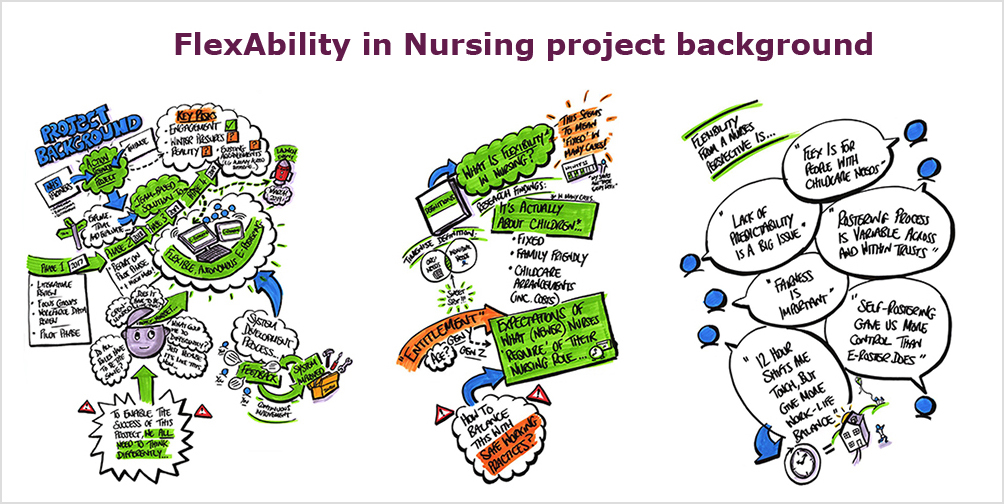

So you’ve understood the importance of flexible job design, and built flexible working into your strategy. But have you taken the next step and embraced flexible recruitment? Here’s why you should.

By Melissa Jamieson, CEO, Timewise
There’s no question that attitudes to flexible working have undergone a seismic shift as a result of the pandemic, and working practices are being transformed as a result. An IOD survey from April 2021 showed that over 60% of organisations plan to adopt hybrid working even after restrictions ease, and employee demand for flexible working is higher than ever, with more than 71% of UK workers saying they want flexible options to remain after the crisis has passed.
And yet, despite all the focus on new ways of working, attitudes towards flexible recruitment don’t seem to be adapting to match. The 2020 Timewise Flexible Jobs Index revealed that, even after the shift towards homeworking following the first lockdown, just 22% of jobs were being advertised as being flexible in some way.
So there’s a real opportunity here for forward-looking employers to offer potential candidates the flexibility they want – and reap the rewards.
If the success of a business rests on its people, attracting a talented, diverse pool of candidates is critical. And with demand as high as it is now, offering these opportunities up front clearly makes sense. Not only will it help put you at the top of candidates’ wish lists, it will also deliver a more committed, more inclusive workforce, and help close your gender pay gap.
And on a more macro level, flexible recruitment plays a vital role in enhancing your employer brand. By openly offering flexible working to candidates, you’ll send a clear message that you are an employer who prioritises employee wellbeing. You’ll show you understand what work-life balance actually means. You’ll also encourage candidates to believe that, if they join your company, they can bring their whole selves to work.
The knock-on effect of all of this is that the best candidates won’t just apply to work for you; they’ll actively seek you out. And with skills shortages on the rise, not to mention a growing sense that a ‘Great Resignation’ is coming, that kind of brand positioning will give you a real edge in the battle for talent.
So, how do you embed flexible recruitment into your organisation, and make sure everyone knows about it? Here are the four initial steps you should take:
Train managers to design and recruit for properly flexible roles
Employees are quick to see through ‘flexwashing’ – that is, implying that you’re up for flexible working without adapting your roles to make it viable. So make sure the jobs you’re advertising are designed so that they can genuinely be done on a flexible basis, and train up HR and line managers in interviewing and supporting your new recruits. If you need support with this, our consultancy team can help.
Make sure external teams are properly briefed
If you’re using a recruitment agency to help you in your talent search, it’s critical that they are on board with your thinking. They need to be clear that you are not just willing, but proactive about recruiting flexibly; otherwise all your hard work will be undermined. So:
Partner with flexible recruitment experts
An easy way to make sure your recruitment partners mirror your approach is to work with a flexible-focused jobs site, such as Timewise Jobs. As well as providing access to 90,000 high-calibre candidates, our team can help you phrase your position on flexible working in the most appealing way. And of course, posting your job on Timewise Jobs sends a clear message that you are an inclusive, flexible employer.
Speak out about your approach
Finally, once your flexible recruitment strategy is in place, and working, speak out about what you’re doing. Share stories about flexible workers on your website. Write up case studies of successful flexible recruitment campaigns and publish them on LinkedIn. Sponsor awards or campaigns, such as the Timewise Power 50.
Again, this is something the Timewise Jobs team can help with. As well as boosting your presence on our site with traditional display ads, we can help you build a microsite which links to your company profile, create a content strategy and deliver an email campaign. These elements all work together to ensure that your brand story is well put-together and clearly communicated.
As a candidate recently said to one of the Timewise Jobs team: “I’m hugely ambitious, but I also need to work flexibly, so I make sure I do my research before I start job hunting. If a potential employer isn’t openly mentioning a commitment to flexible working, I probably won’t be right for them – or them for me – so I tend to steer clear.”
The end goal of recruiting flexibly is that the best available candidates will seek you out and want to work with you. So don’t just sign up for flexible recruitment; prioritise it, and shout about it.
Published June 2021

You might think that we would welcome the proposals on flexible recruitment in the government’s Good Work Plan with open arms. Surely, as champions of flexible working, we would be delighted by the concept of requiring all employers to clarify whether a role they’re advertising is flexible? Well yes, but… there’s a bit more to it than that.
It’s certainly true that Timewise has led the campaign for flexible recruitment that has got us to this point. We’ve been tracking the flexible jobs market for the last five years with our annual Flexible Jobs Index. And we were the first to flag up that the supply of flexibly advertised roles (currently just 15%) lags way behind the massive demand for such roles (which our research has put at 87%).
So of course, we would be delighted if more employers would consider making their roles flexible, and then advertise them as such. But should they be legally required to do so? Our answer is: not yet, and not without proper support in place. Here’s why we hold this view, and what we recommend instead.
We have always been clear that any legislation around flexible recruitment should benefit candidates and widen the flexible jobs market. But legally requiring employers to consider making a role flexible could have unintended consequences that would have a negative impact on both.
Firstly, there’s a danger that legislation without support will simply lead to ‘flexwashing’, by which I mean employers advertising a role as flexible without making any changes to it. And that just won’t work. You can’t just dish out a laptop and leave staff to get on with working remotely, or chop a day off the working week and expect the same outputs.
So managers and HR will need support and training in how to design flexible roles; otherwise, they’ll do it badly. This is true for all roles, but particularly acute when it comes to front line low-margin sectors. In these, it is much more complex to create good flexible jobs that give workers more control and predictability over how they work.
And secondly, there’s a concern that employers who aren’t really on board will advertise a role as having flexibility, because they feel they have to, and then mysteriously fail to shortlist any candidates who they think might want it. That’s bad news all round, but particularly for groups such as parents, carers or people with a medical condition, for whom flexibility can be the difference between working and not.
But look: this isn’t just a moan, and we’re not against the principles that the government is working towards. On the contrary, I’ve been pushing for a programme to support the development of good flexible work in my role on the government’s Flexible Working Taskforce.
Our ultimate goal at Timewise is to help create a buoyant jobs market for the millions of people who want and need to work flexibly. And we know, based on our 15 years’ experience in this area, that will take time and thought to get right. So here are the steps we believe should be taken to make this proposed legislation a success:
I believe all three of these elements have an equally important part to play in stimulating a fairer flexible jobs market. Yes, legislation is important, but changing workplace law won’t change workplace culture by itself.
To achieve real progress, businesses also need to be helped to understand how to equip managers with the skills they need. And they need to make the sustainable, structural changes that we know will support genuine flexible recruitment. That means our government – whichever it may be – incentivising and supporting businesses to do their bit.
It’s important to remember that this isn’t a quick fix; as the Scandinavian countries’ experiences have shown, it takes many years to create a truly flexible market. And it only happened because their governments were prepared to fund programmes to improve business performance and the quality of flexible roles, as well as prioritising and investing in family-friendly working practices.
So please, let’s do it properly. Step by step. Because if we are successful at creating real culture change, we will have a truly flexible jobs market. One in which employers are not just advertising job vacancies as flexible, but actually hiring quality candidates into well-designed flexible roles. If you’d like some help getting started, you know who to ask.
Published October 2019

Getting and keeping staff is now the number one challenge for the NHS. And the NHS Long Term Plan recognises that poor work-life balance is a key underlying reason.
From our work across many sectors, Timewise knows that work-life balance is a key element of any ‘great place to work’. But how can hard-pressed ward managers, trying to provide 24-hour patient care with limited resources and at the same time satisfy clinical requirements for particular skills on particular shifts, also facilitate work-life balance for nurses?

Timewise set up a pilot to explore one way of addressing this problem. We worked with 240 nurses in seven wards in three hospitals, to test whether a team-based rostering system could improve nurses’ work-life balance. The aim was to increase nurses’ input into their own working patterns.

Nursing has been highlighted as ‘the most urgent challenge’ in the Interim NHS People Plan. Our year-long pilot has focused on improving nurses’ work-life balance by addressing their working patterns. And it’s delivered three key recommendations to tackle the nursing shortage head-on.
It’s well-known that the NHS is struggling to find and keep enough staff, but the numbers relating to nursing shortages are no less shocking for their familiarity. Nurse resignations for poor work-life balance have increased by a staggering 169% between 2011-12 and 2017-18, according to analysis for the Labour party. And the Interim NHS People Plan notes that the organisation will need to recruit 40,000 extra nurses in the next five years just to stand still.
As we know from our work in other sectors, offering flexible working is a sure-fire way to improve work-life balance. But in a shift-based, skills-driven, 24-hour environment like an NHS ward, it’s complex to introduce. As a result, most wards operate on a two-tier system in which a few, fortunate individuals have an agreed flexible working arrangement (FWA), usually for childcare reasons. Everyone else then has to fit around them, with minimal input and even less predictability.
Over the last year, we have been supported by the Burdett Trust for Nursing to explore potential solutions for making work-life balance available for all, and not just those with a FWA.
Our belief was that by increasing the fit between nurses’ working pattern preferences and their actual working patterns, more of them would stay. At the same time, we were mindful that any solution would need to work within the KPIs and mix of skills that ward managers needed to deliver.
So, building on academic research, and following a series of focus groups with participating hospitals, we piloted a team-based approach to rostering , with the aim of increasing the amount of input that nurses have into their working patterns, whilst taking into account the operational constraints of life on the ward.
A sizeable piece of action research, this two-stage project involved 240 nurses in seven wards across three NHS trusts. We ran the first, six-month stage at Birmingham Women and Children’s Hospital (BWCH), and used our findings to inform the second stage at Nottingham University Hospitals (NUH) and University Hospital Southampton (UHS).
We began at BWCH by creating and training a lead team for each ward who were responsible for creating the roster (previously undertaken by the ward manager). Each lead team were allocated a subgroup of nurses and tasked with finding out their long-term preferences.
The lead team members then worked together to create the roster based on their colleagues’ input, making sure that unpopular shifts were spread fairly and that each shift had the right number of nurses with particular skills.
Following the completion of the first pilot at BWCH, we fed our learnings into the second six-month stage, across all three hospitals, and finished with a formal evaluation.
Our evaluation indicated that there were three main benefits to team-based rostering. A comparison of pre- and post-pilot data showed:
Other important findings include: the critical role played by the ward manager in making the new approach work; the need to choose the lead team members carefully, to ensure the right balance of skills; and the extra time (and so budget) required to train the teams and deliver the roster.
Overall, then, we are cautiously positive about the potential of team-based rostering; indeed, the teams who worked with us are continuing to create their rosters in this way. However, there’s no question that more work is needed so that other teams and NHS Trusts can benefit from what we have learned. And, given that most of the guidelines on flexible working in the NHS are not adapted for shift-based roles, it’s also clear that bespoke definitions need to be developed.
We are therefore making the following recommendations to bring about widespread change:
It won’t be a quick fix; these kind of changes take time, money and serious collaboration. But by taking action, we stand to gain a happier, healthier workforce who will stay within the NHS for longer. And given that nursing shortages are already at critical levels, there’s no time to waste.
Published September 2019
 Across the UK, policy makers with ambitious plans for regeneration and growth are keen to ensure that no one in their community is left behind. But the lack of good flexible jobs means that key groups of people (such as parents and carers, people with disabilities or older workers) are often trapped in low-paid roles or locked out of the jobs market altogether.
Across the UK, policy makers with ambitious plans for regeneration and growth are keen to ensure that no one in their community is left behind. But the lack of good flexible jobs means that key groups of people (such as parents and carers, people with disabilities or older workers) are often trapped in low-paid roles or locked out of the jobs market altogether.
Timewise has been commissioned by some of the UK’s most forward-looking local authorities and policy makers to report on the availability of flexible roles within their regions. The research we’ve carried out so far has shown clearly that the demand for flexible roles dramatically outstrips the supply, and has provided the evidence to support the creation of strategies for systemic change.
However, gathering the evidence is just the first step. We’re also working closely with local leaders to bring these strategies to life, unlock their jobs markets to quality flexible roles, and so tackle issues of social mobility, gender and diversity, as well as a lack of career progression.
We are currently partnering with over 25 councils and other major public sector employers, who are acting as champions for change, both as employers and influencers. We’re also working with metro mayors and anchor institutions to support the drive for more flexible jobs, through social consultancy and job design programmes.
As the Social Mobility Commission highlighted in their recent report, local leaders have a key role to play in building routes out of low-paying roles and into higher, skilled positions, by thinking creatively about interventions that could help address career progression. The lack of good, flexible jobs is holding communities back; if you are a regional policy maker who is looking to develop an innovative strategy for inclusive growth, please get in touch.
Download our latest Regional Flexible Jobs Index, for West Yorkshire
To raise family living standards in the UK, the number of ‘quality’ part-time and flexible jobs needs to be increased. This study quantified the impact such an increase might have. It also analysed supply versus demand, and suggested that businesses are currently under-utilising a proportion of the skilled candidate market.
Published January 2016
Returner programmes are becoming increasingly popular with employers who want to recruit talented, experienced people, growing from just three in 2014 to over 40 last year.
For employees, the benefits of these programmes are obvious. They usually include training and mentoring to boost the returner’s confidence, and to help fill any skills and knowledge gaps. And they often lead to a permanent role, either straight away or at the end of the programme, if both sides are agreeable.
How returner programmes deliver for business
But what’s perhaps less well-known is the advantages they can deliver to an organisation. As well as being a cost-effective way to recruit experienced hires, returner programmes can help employers:
To help employers make the most of these advantages, we have created a set of Best Practice Guidelines for Returner Programmes, in collaboration with Women Returners and the Government Equalities Office. They offer a step-by-step guide to what returner programmes are, how to set them up, how to incorporate flexible working and how to deliver them successfully.
Download pdf Guidelines for Returner ProgrammesI hope you find the guidelines useful, and if Timewise can be of any further help, do please get in touch.
Please call 020 7633 4444 or email info@annie-hacketttimewise-co-uk
Published June 2018
 The staffing crisis in the NHS is in the news more often than any of us would like. From the fact that more nurses are leaving the profession than joining, and the drop in the number of EU nurses registering to work in the UK to the potential impact of British expat pensioners returning home, there’s little doubt that something needs to be done to attract more people into the profession – and to keep the nurses we already have.
The staffing crisis in the NHS is in the news more often than any of us would like. From the fact that more nurses are leaving the profession than joining, and the drop in the number of EU nurses registering to work in the UK to the potential impact of British expat pensioners returning home, there’s little doubt that something needs to be done to attract more people into the profession – and to keep the nurses we already have.
So the time really is right for a root-and-branch look at how nursing works in practice, in terms of workload, scheduling and nurses’ ability to balance work with other responsibilities. Our new FlexAbility in Nursing project, which we’re running in conjunction with three leading hospital trusts (Birmingham Women’s & Children’s Hospital, Nottingham University Hospital and University Hospital Southampton), will deliver exactly that.
The project, which is supported by funding from the Burdett Trust, is a piece of action research into how flexible working could bring about the change the profession needs.
The first stage of the project is now complete. It involved a literature review and a series of focus group sessions, designed to understand how flexible working is defined within the NHS, what the barriers are, and how to overcome them. One of the key learnings to come out of this stage is that flexibility means very different things to different stakeholders.
So, from the employer’s point of view, flexibility is seen as a way to achieve efficiency and save costs – particularly bank and agency costs. In an ideal world, all staff would be ‘fully flexible’, and able to fill rota gaps at short notice, so that the right staff are in the right place at the right time.
But many nurses are coming at it from a different direction. When rotas vary wildly from one week to the next, it’s difficult to plan a life. So for them, flexible working means working within an agreed, predictable framework and, in some cases, working fewer hours. For example, nurses who are parents may want to work fewer shifts a week, and need these to be on the same day and same time each week so they can arrange childcare. Flexibility, for nurses, needs to be fixed.
It’s clear then, that the gap between what employers and employees require from a flexible working solution is a tough one to bridge. And the way it’s organised now isn’t working for anyone.
The current variable rota system doesn’t give many nurses with other responsibilities the fixed working arrangement they need; in the words of one nurse who we spoke to: “If you have kids, you need a partner who’s flexible, or a family who can do care. If you don’t have that, you can’t be a nurse.” Other nurses are equally disillusioned, feeling that they get given an unfair amount of the unsocial hours.
Nor does it give managers enough choice about how to organise their shifts; as one told us: “Once you’ve done the skill mixes and the formal flexible working arrangements, it leaves no choice about who does the other shifts.”

It’s no wonder, given this mismatch of needs, that the profession is struggling to attract and recruit enough staff. So the next step in our programme is to find a new approach that works for everyone: giving nurses the right kind of flexibility to suit their work-life balance needs and keep them in the profession, whilst allowing managers to deliver efficient and effective resourcing. And of course, as a result, encouraging more people to become nurses.
We’ll do this by designing a team based approach to scheduling rotas, and then piloting it. We’re working on the design right now; once it’s finalised we’ll pilot it first with three wards at Birmingham Children’s Hospital early next year. We’ll share our learnings at both stages of the process, so if you’re in the nursing profession – or if it matters to you that the NHS is properly staffed – watch this space.
To find out more about the innovative research opportunities we offer, contact info@timewise.co.uk or call 020 7633 4444
Published November 2017
 By Karen Mattison, Co-Founder
By Karen Mattison, Co-Founder
Having spent more than 10 years in the flexible sphere, I’m aware of the perception that it’s mainly women, and particularly mums, who want and need to work flexibly. But I’ve long been convinced that focusing on flexible working as a female issue isn’t necessarily serving women well.
So, knowing that the best way to encourage employers to open up a wider range of roles to flexibility would be to prove the demand, I commissioned an in-depth piece of research focusing on who wants to work flexibly and why in 2017. And the results were more clear-cut than even I was expecting.
Our research revealed that a staggering 87% of the UK’s full-time workforce either work flexibly already or wish they could. The numbers are similar for men (84%) and women (91%), and they cut across the generations, with 92% of Generation Y, 88% of Generation X and even 72% of the baby boomers preferring this way of working.
For people who aren’t currently working, the numbers are equally high; 93% want to find a job that allows them to work part-time or flexibly in some way.
And the reasons vary too; it’s certainly not just about childcare. The most common one mentioned was to have more control over work/life balance (57%), followed by finding it generally useful or convenient (50%) and cutting down on commuting time (30%).
So there’s no room for doubt here: in 2017, flexible working isn’t just for mums. But the problem is that, despite this huge demand, only 1 in 10 jobs are currently advertised as being flexible at the point of hire. As a result, the 84% of male and 91% of female full-timers cited above have few flexible options if they want to move jobs.
The onus, then, has to be on employers to start thinking more broadly about who might want to work flexibly, and to change their hiring and job design practices accordingly. That means, for example, thinking creatively about how to design jobs to make them work on a flexible basis, and making sure that the technology is in place to support it.
We’re hoping that the research will lead to a shift in the way employers approach flexible working, and we’re keen to help make it happen. Our expert team offer training and consultancy services that are second to none; let’s work together to crack this issue and provide truly flexible roles for all.
To find out more about our consultancy and training services, contact info@timewise.co.uk
Published October 2017

Businesses have been warning about an impending skills shortage for some time now; and the evidence suggests that it’s really starting to bite. According to a new survey of 400 firms by the Open University, many UK employers have had to pay well above market rate to attract employees over the past year. And the university suggests that the annual cost of this to business could be as much as £2bn.
But for all of us at Timewise, this approach shows a startling lack of originality. Of course, potential employees are unlikely to refuse a higher salary; but by the same logic, a further cash incentive could easily persuade them to move on elsewhere. Whereas if you really want to attract a loyal, motivated and productive employee, there’s a much better way – offer them flexibility.
Thanks to advances in technology and flex-friendly government legislation, flexible working is becoming more common – and no longer just a way to entice women back from maternity leave. 92% of Millennials identify flexibility as a top priority when job hunting and, at the other end of the workforce, the Centre for Ageing Better argues that it could be a key factor in helping the growing number of over 50s work for longer.
It’s not just about what employees want either; the business case for flexibility is sound, and well-documented. For example, remote working champions tend to have less people in the building at once, allowing them to reduce their office space and so their business overheads. A survey by BT indicated that the productivity of flexible workers increased by 30%. And in a CIPD survey, 73% of employees said that flexible working improves staff motivation – and, critically, 75% said it has a positive effect on retention[1].
In short, then, flexible working makes sense for employers and appeals to employees. Yet, despite the fact that there are around 8.7 million people in the UK who would like to work flexibly, less than 1 in 10 jobs adverts currently offer this up front. So an employer who offered flexibility as part of the package – and even better, could demonstrate a flexible pathway for career progression – would immediately have the edge over one who doesn’t.
Our aim here at Timewise is for the offer of flexibility to become the norm; to be just another part of every job description, like holiday entitlement. We offer consultancy and training to organisations who share our aim, and we’re working at every level to bring about this change.
But in the meantime, for employers, offering flexibility at the point of hire is something that will make you really stand out. It will certainly increase your chances of catching the best talent – and unlike mere money, it’s likely to help you hold on to them too.
To find out more about our consultancy and training services, call 020 7633 4444 or email info@timewise.co.uk
Published July 2017
[1] CIPD 2012: “Flexible Working Provision and Uptake”